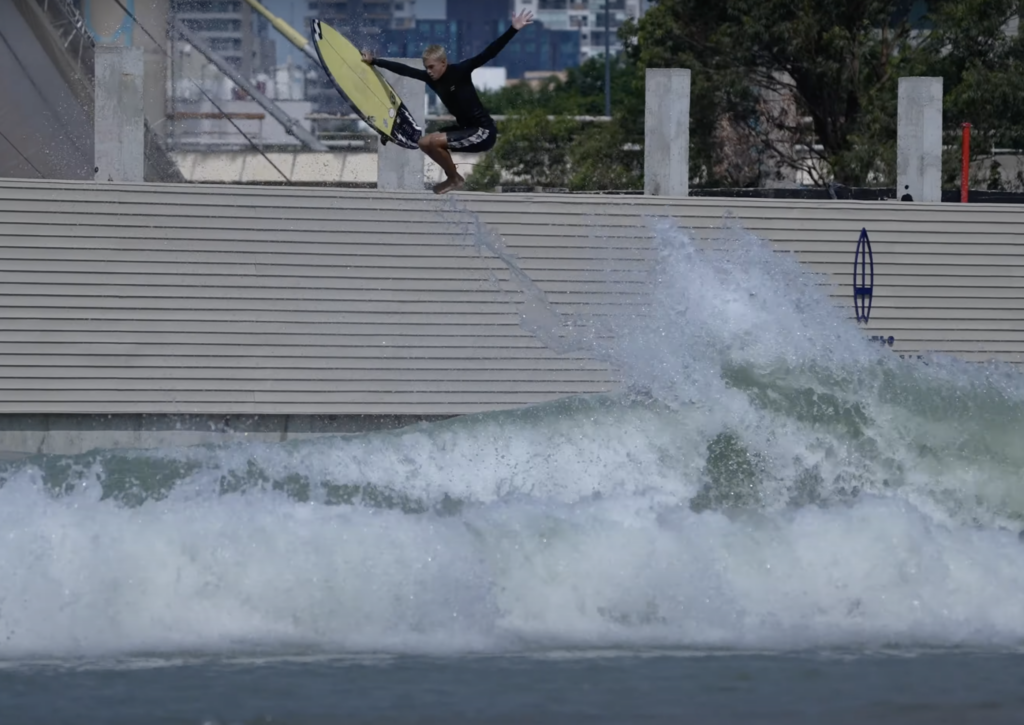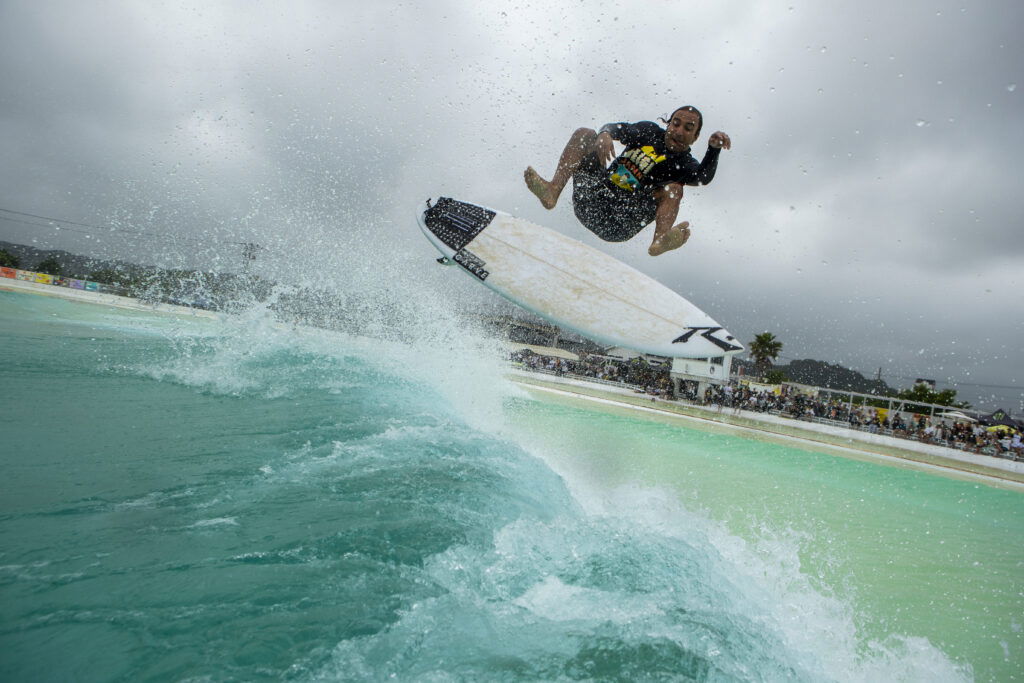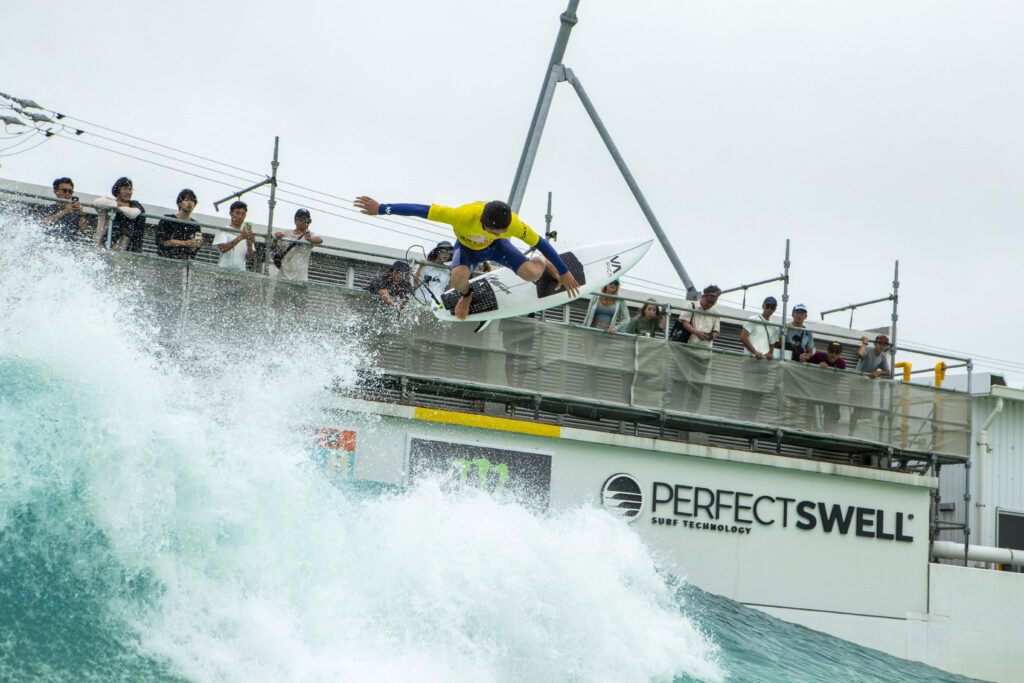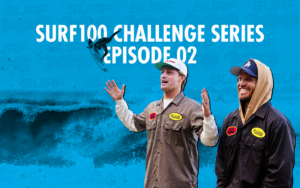The Story Behind The New Stab High Air Section
Is the McFly the biggest wavepool air section ever?
You’ll need a Stab Premium account to watch Stab High Japan Presented by Monster Energy.
The event will be broadcast live on stabmag.com and the Stab Premium app at 5 pm on May 23rd and 24th (PDT), or 10 am on May 24th and 25th (AEST). Sign up to watch here.
On site entry to the event is free for all Stab Premium members who are in Japan and want to watch in person. Just email [email protected] and let us know which days you are looking to attend.
On an average @stab Instagram post, we gather anywhere from 30 – 200 comments.
On a good one? Maybe 500 – 1000 comments.
In the first week of March, Pedro Barros landed an intergalactic backside straight air that rapidly collected over 1,500 comments and about 1.5 million views.
The location? São Paolo’s new (private) American Wave Machine pool.
The section? A monstrosity formally known as the McFly.
The feat of hydrodynamic engineering quickly sent Stab groupchats into a tail spin, as we were weeks out from announcing our return to Japan for Stab High — and our Highball air section had just been massively outshone.
Fortunately, after a few hopeful phone calls from Sam McIntosh, the masterful team of engineers and visionaries at American Wave Machines (Perfect Swell) assured us they’d be able to deliver the McFly section to the Japan pool in time for our annual space race.
To hear the story behind the section, I called Willy McFarland (Business Development) and Miquel Lazaro (Senior Engineer) at American Wave Machines.
“São Paulo was our second project with JHSF, our partner in Brazil,” says Willy. “The first one was Boa Vista Village. When we’re going to do these projects and turn ’em on for the first time, we’re thinking about what we can do that’s new and will catch peoples eye. With Boa Vista, it was easy. It was such a long wave, so we made two air sections on one wave. And that was great.
“For São Paulo, we knew it was going to be a great pool, but it was really similar to Boa Vista. So we had to think about, ‘what can we show people that they haven’t seen before?’ We decided there was more juice left to squeeze out of an air wave to get more height.
“Ultimately we landed on this concept internally we were referred to as ‘lift.’ That became our internal word for when the wave kind of leaps itself up at the end. Kinda like what looks like backwash, but more subtle and readable. We wanted it to be readable, we wanted it to be intuitive.
“We did a lot of refining based on air waves in the ocean, and then Rob Kelly was the first guinea pig. He offered a bunch of feedback and landed the first big straight air. Then Pedro and Zeke and those guys came down and it was a pretty clear proof of concept. It worked better than we’d even imagined, and we were just fired up. And then you guys at Stab started blowing us up and we had to figure out how to add the wave into the Japan pool.”
Within a few weeks, we began receiving WeTransfer links to videos of a developing Japanese flavored McFly section — with Ryji Masuda as a standout tester.
Now, Shizunami Surf Stadium is the only place in the world where you can book a session at the newly created section.
“At the beginning, I thought we were just going to download it straight on the system from Brazil to Japan,” continues Willy. “But quite a bit of work had to go into actually transferring the concept of the section into Japan. It’s a much shorter pool in Japan. We have 30 feet less runup, so we had to tweak the wave a little bit. But core concept of lift is there, which is what we’re excited about. We’re going to see some crazy airs,”
Miquel follows, giving more insight into the process behind transferring a wave, digitally, across the Pacific Ocean.
“Essentially, our engineering team was working remotely with all the guys on the ground in Japan, doing testing sessions after hours to try to adjust it and make the same section,” says Miquel. “We had a lot of screenshots from São Paulo in all the different moments of the wave. So, we were doing a timeline, lining up images side-by-side and going, okay, look where it’s different, look where it’s the same. Finally, we isolated the key areas of difference. We also had some feedback from guys like Ryji and Hiroya Miwa who ripped it.
“It took a little bit longer than we expected for sure. Eventually it worked out. We started cracking the code and we got to where we are right now. We’re really excited for this wave to be in Stab High.”
When I ask him to compare the section in the Japan pool and the Brazil pool, Miquel thinks for a moment.
“I think there’s less runup, so you’re getting maybe one less pump in Japan,” he says. “But, I think one thing that doesn’t come through on some of the São Paulo stuff was that the make ratio for these guys was way lower. I think the Japan section is just a little less gnarly than the São Paolo pool, but it’s still way bigger than last year’s ramp — and I think guys will still be consistent on it.”
And, to finish, Willy offers an excited statement.
“I mean I’m known to exaggerate, but I think this event could be seriously historic.”

To get more perspective on the wave, I called Jacob Szekely, who was one of the first testers down in São Paulo.
“The McFly section is definitely a lot bigger,” he laughs. “Probably the biggest wavepool section yet. If you time it right, you’re going four times as high and it’s going to look way sicker. I feel pretty confident that I can land shit on the normal air section. I think I’ll be less consistent on McFly. It did take me quite a few waves to get it figured out. That said, I almost had a double spin in Brazil, and it would be sick to do bigger gnarlier shit in this contest — and the McFly has the potential for that.
“I feel like the section is good for an Alley-Oop, good for a straight air, and then if you hit it early enough you can do a full rote or a back flip. But if you hit it super late, it might send you to the flats too much for a full rote. Depending on the timing,” he pauses. “I mean, it’s good for every type of air except for a finger flip,” he chuckles.
“Is that why you’re a little hesitant,” I ask.
He laughs, “I will admit, it’s not a good air section for finger flips. And that’s what I wanna try. But I do think everyone will be going huge. It’s just gonna be a matter of who can figure it out quickly.”

After being an initial tester for wavepool air sections in Korea, Texas, Arizona, Melbourne, Sydney, and more, Zeke has amassed a unique ability to adapt quickly to new chlorinated sections.
“Look, Kevin Schulz was pretty strategic about hitting the McFly when we were in Brazil,” says Zeke. “He’s probably one of the most consistent aerialists on the planet, he smokes me every session I’ve ever surfed with him in the ocean. He’s way better at airs than me. But I landed 10 more airs than him in the Brazil pool. I think it’s a different game.
“I think when adapting to a new air section, the most important thing is being able to adjust your timing. I don’t want to sound like a fucking QS dork, but I like going in and looking at the clips and analyzing my timing. Maybe that’s not core, but it works for me.
“Otherwise I waste way too many waves trying the same thing over and over again,” Zeke continues. “And, even in the pool in Japan last year, looking at the ramp, the wave isn’t exactly the same every time, it’s close, but sometimes you’ll just get sent extra high or extra far to the flats on some. Being able to adapt is so important.”

To finish, I called Ryji Masuda as he prepares for his second appearance in our Bottle Rockets division.
“That section is really gnarly,” he grins. “It was so good. The left was my favorite, honestly. You go so high. The landing was a little bit tricky though, just hard on the knees,” he laughs. “You don’t even have to try really. It just makes you go so much higher than last year. I think you can do almost any air, you have so much time. There’s so many possibilities. You can just be floating up there.
“I don’t mind the shorter runup. It’s not like you need so much speed because the section’s kind of doing a lot of your work,” continues Ryji. “I think it’s not really much of a combo wave like last year. There’s not a lot of time for a turn, so I think it’ll just be two or three big pumps into the section.”
Finally, Ryji’s father, Takuji, offers his thoughts.
“Just my two cents from the side. Once you see the McFly in person, you can’t go back to anything that you’ve seen before. Last year’s Highball wave doesn’t even compare.”












